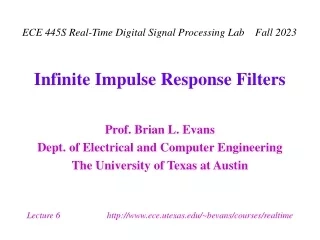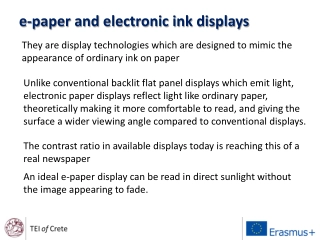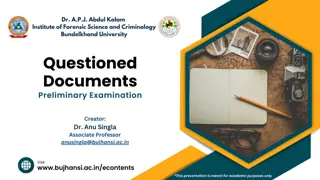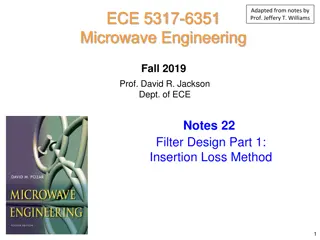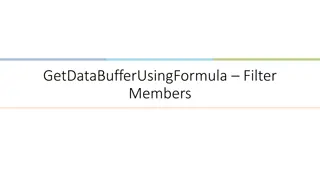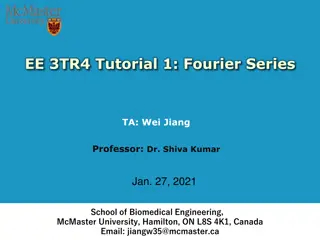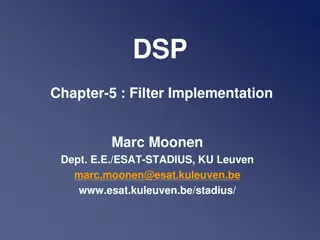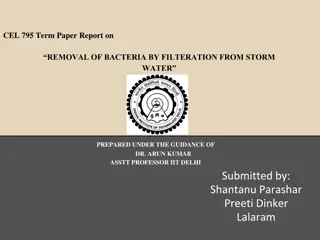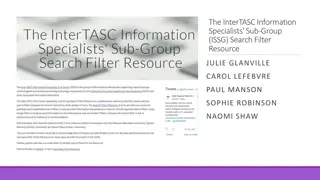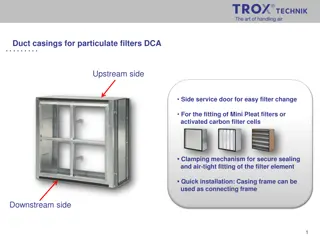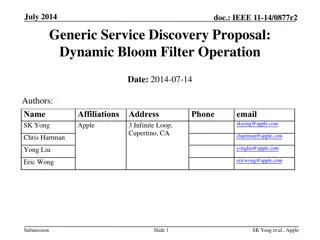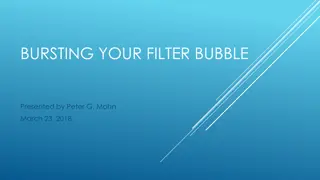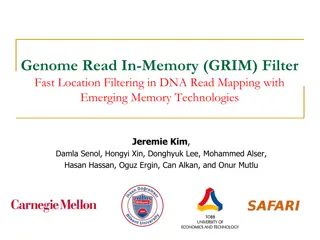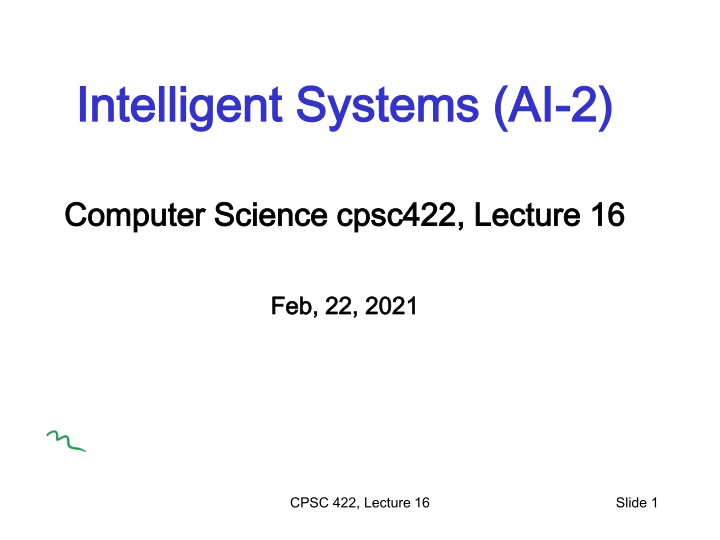
Probabilistic Inferences and Most Likely Sequences in AI Systems
Explore probabilistic temporal inferences and most likely sequence concepts in intelligent systems, focusing on HMMs, part-of-speech tagging, and conditional probability. Dive into Natural Language Processing, Bioinformatics, and the critical inference of finding the most likely sequence of states from observations.
Download Presentation

Please find below an Image/Link to download the presentation.
The content on the website is provided AS IS for your information and personal use only. It may not be sold, licensed, or shared on other websites without obtaining consent from the author. If you encounter any issues during the download, it is possible that the publisher has removed the file from their server.
You are allowed to download the files provided on this website for personal or commercial use, subject to the condition that they are used lawfully. All files are the property of their respective owners.
The content on the website is provided AS IS for your information and personal use only. It may not be sold, licensed, or shared on other websites without obtaining consent from the author.
E N D
Presentation Transcript
Intelligent Systems (AI Intelligent Systems (AI- -2) 2) Computer Science cpsc422, Lecture 16 Computer Science cpsc422, Lecture 16 Feb, 22, 2021 Feb, 22, 2021 CPSC 422, Lecture 16 Slide 1
Lecture Lecture Overview Overview Probabilistic temporal Inferences Probabilistic temporal Inferences Filtering Filtering Prediction Prediction Smoothing (forward Smoothing (forward- -backward) backward) Most Likely Sequence of States (Viterbi) Most Likely Sequence of States (Viterbi) Approx. Inference (Particle Filtering) Approx. Inference (Particle Filtering) CPSC 422, Lecture 16 2
HMMs : most likely sequence HMMs : most likely sequence Natural Language Processing: Natural Language Processing: e.g., Speech Recognition States: phoneme \ word Observations: acoustic signal \ phoneme Bioinformatics Bioinformatics: Gene Finding States: coding / non-coding region Observations: DNA Sequences For these problems the critical inference is: For these problems the critical inference is: find the most likely sequence of states given a sequence of observations Most Likely Sequence: argmaxx1:TP(X1:T| e1:T) Slide 3
Part-of-Speech (PoS) Tagging Given a text in natural language, label (tag) each word with its syntactic category E.g, Noun, verb, pronoun, preposition, adjective, adverb, article, conjunction Input Brainpower, not physical plant, is now a firm's chief asset. Output Brainpower_NN ,_, not_RB physical_JJ plant_NN ,_, is_VBZ now_RB a_DT firm_NN 's_POS chief_JJ asset_NN ._. Tag meanings NNP (Proper Noun singular), RB (Adverb), JJ (Adjective), NN (Noun sing. or mass), VBZ (Verb, 3 person singular present), DT (Determiner), POS (Possessive ending), . (sentence-final punctuation)
Most Likely Sequence (Explanation) Most Likely Sequence (Explanation) Most Likely Sequence: argmaxx1:TP(X1:T| e1:T) Idea find the most likely path to each state in XT Then pick the one with highest probability (As for filtering etc. let s try to develop a recursive solution) CPSC 422, Lecture 16 Slide 5
Joint vs. Conditional Joint vs. Conditional Prob You have two binary random variables X X and Y argmaxxP(X | Y=t) ? argmaxxP(X , Y=t) Prob Y A. Different x B. C. C. It depends Same x X t f t f Y t t f f P(X , Y) .4 .2 .1 .3
High level rationale High level rationale 1. The sequence that is maximizing the conditional prob is the same that is maximizing the joint (see previous clicker question) 2. We will compute the max for the joint, and by doing that we can then reconstruct the sequence that is maximizing the joint 3. Which is the same that is maximizing the conditional prob
Most Likely Sequence: Formal Derivation (step 2: Most Likely Sequence: Formal Derivation (step 2: compute the max for the joint max for the joint ) ) compute the max x1,...xtP(x1,.... xt ,xt+1, e1:t+1)= max x1,...xtP(x1,.... xt ,xt+1,e1:t, et+1)= = max x1,...xt P(et+1|e1:t,x1,.... xt ,xt+1) P(x1,.... xt ,xt+1,e1:t)= = max x1,...xt P(et+1|xt+1) P(x1,.... xt ,xt+1,e1:t)= = max x1,...xt P(et+1|xt+1) P(xt+1| x1,.... xt , e1:t)P(x1,.... xt , e1:t)= = max x1,...xtP(et+1 |xt+1) P(xt+1|xt) P(x1,.... xt-1 ,xt, e1:t) = P(et+1 |xt+1) max xt (P(xt+1|xt) max x1,...xt-1P(x1,.... xt-1 ,xt, e1:t)) Cond. Prob Markov Assumption Cond. Prob Markov Assumption Move outside the max CPSC 422, Lecture 16 Slide 8
Most Likely Sequence: Formal Derivation (step 2: Most Likely Sequence: Formal Derivation (step 2: compute the max for the joint compute the max for the joint ) ) max x1,...xtP(x1,.... xt ,xt+1, e1:t+1)= max x1,...xtP(x1,.... xt ,xt+1,e1:t, et+1)= = max x1,...xt P(et+1|e1:t,x1,.... xt ,xt+1) P(x1,.... xt ,xt+1,e1:t)= = max x1,...xt P(et+1|xt+1) P(x1,.... xt ,xt+1,e1:t)= = max x1,...xt P(et+1|xt+1) P(xt+1| x1,.... xt , e1:t)P(x1,.... xt , e1:t)= = max x1,...xtP(et+1 |xt+1) P(xt+1|xt) P(x1,.... xt-1 ,xt, e1:t) = P(et+1 |xt+1) max xt (P(xt+1|xt) max x1,...xt-1P(x1,.... xt-1 ,xt, e1:t)) Cond. Prob Markov Assumption Cond. Prob Markov Assumption Move outside the max CPSC 422, Lecture 16 Slide 9
Intuition behind solution Intuition behind solution P(et+1 |xt+1) max xt (P(xt+1|xt) max x1,...xt-1P(x1,.... xt-1 ,xt,e1:t)) Slide 10 CPSC 422, Lecture 16
P(et+1 |xt+1) max xt (P(xt+1|xt) max x1,...xt-1P(x1,.... xt-1 ,xt,e1:t)) The probability of the most likely path to S2 at time t+1 is: CPSC 422, Lecture 16 Slide 11
Most Likely Sequence Most Likely Sequence Identical to filtering (notation warning: this is expressed for Xt+1 instead of Xt , it does not make any difference!) P(Xt+1 |e1:t+1) = P(et+1| Xt+1) xtP(Xt+1 | xt ) P(xt| e1:t) max x1,...xtP(x1,.... xt ,Xt+1,e1:t+1) = P(et+1 |Xt+1) max xt (P(Xt+1|xt) max x1,...xt-1P(x1,.... xt-1 ,xt,e1:t) Recursive call f1:t= P(Xt |e1:t ) is replaced by m1:t = max x1,...xt-1 P(x1,.... xt-1 ,Xt,e1:t) (*) the summation in the filtering equations is replaced by maximization in the most likely sequence equations CPSC 422, Lecture 16 Slide 12
Rain Rain Example Example max x1,...xtP(x1,.... xt ,Xt+1,e1:t+1) = P(et+1 |Xt+1) max xt [(P(Xt+1|xt) m 1:t] m 1:t = maxx1,...xt-1 P(x1,.... xt-1 ,Xt,e1:t) 0.818 0.515 0.182 0.049 m 1:1is just P(R1|u) = <0.818,0.182> m 1:2= P(u2|R2) <max[P(r2|r1) * 0.818, P(r2| r1) 0.182], max[P( r2|r1) * 0.818, P( r2| r1) 0.182]= = <0.9,0.2><max(0.7*0.818, 0.3*0.182), max(0.3*0.818, 0.7*0.182)= =<0.9,0.2>*<0.573, 0.245>= <0.515, 0.049> CPSC 422, Lecture 16 Slide 13
Updating this with evidence from for t =1 (umbrella appeared) gives P P(R1| u1) = P P(u1 | R1) P P(R1) = <0.9, 0.2><0.5,0.5> = <0.45, 0.1> ~ <0.818, 0.182> CPSC 422, Lecture 16 Slide 14
Rain Rain Example Example 0.036 0.818 0.515 0.124 0.182 0.049 m 1:3= P( u3|R3) <max[P(r3|r2) * 0.515, P(r3| r2) *0.049], max[P( r3|r2) * 0.515, P( r3| r2) 0.049)= = <0.1,0.8><max(0.7* 0.515, 0.3* 0.049), max(0.3* 0.515, 0.7* 0.049)= =<0.1,0.8>*<0.36, 0.155>= <0.036, 0.124> CPSC 422, Lecture 16 Slide 15
Viterbi Algorithm Viterbi Algorithm Computes the most likely sequence to X Xt+1 by running forward along the sequence computing the m message at each time step Keep back pointers to states that maximize the function in the end the message has the prob. Of the most likely sequence to each of the final states we can pick the most likely one and build the path by retracing the back pointers CPSC 422, Lecture 16 Slide 16
Viterbi Algorithm: Complexity Viterbi Algorithm: Complexity T = number of time slices S = number of states Time complexity? A. A. O(T2 S) B. B. O(T S2) C. C. O(T2 S2) Space complexity A. A. O(TS) B. B. O(T2 S) C. C. O(T2 S2) CPSC 422, Lecture 16 Slide 17
Lecture Overview Lecture Overview Probabilistic temporal Inferences Probabilistic temporal Inferences Filtering Filtering Prediction Prediction Smoothing (forward Smoothing (forward- -backward) Most Likely Sequence of States (Viterbi) Most Likely Sequence of States (Viterbi) Approx. Inference In Temporal Models (Particle Approx. Inference In Temporal Models (Particle Filtering) Filtering) backward) CPSC 422, Lecture 16 18
Limitations of Exact Algorithms HMM has very large number of states Our temporal model is a Dynamic Belief Network with several state variables Exact algorithms do not scale up What to do?
Approximate Inference Approximate Inference Basic idea: Basic idea: Draw N samples from known prob. distributions Use those samples to estimate unknown prob. distributions Why sample? Why sample? Inference: getting N samples is faster than computing the right answer (e.g. with Filtering) CPSC 422, Lecture 11 20
Simple but Powerful Approach: Simple but Powerful Approach: Particle Filtering Particle Filtering Idea from Idea from Exact Filtering Exact Filtering: : should be able to compute P P(X Xt+1 | | e e1:t+1) from P( X Xt | e .. One slice from the previous slice | e1:t ) Idea from Idea from Likelihood Weighting Likelihood Weighting Samples should be weighted by the probability of evidence given parents New Idea: New Idea: run multiple samples simultaneously through the network CPSC 422, Lecture 11 21
Particle Filtering Particle Filtering N samples together through the network, one slice at Run all N samples together a time STEP 0: STEP 0: Generate a population on N initial-state samples by sampling from initial state distribution P(X X0 0) N = 10
Particle Filtering Particle Filtering STEP 1 STEP 1: Propagate each sample for x xt t forward by sampling the next state value x xt+1 t+1 based on P(X Xt+1 t+1 |X Xt t ) ) Rt t f P(Rt+1=t) 0.7 0.3
Particle Filtering Particle Filtering STEP 2 STEP 2: Weight each sample by the likelihood Weight each sample by the likelihood it assigns to the evidence E.g. assume we observe not umbrella not umbrella at t+1 Rt P(ut) P( ut) t f 0.9 0.2 0.1 0.8
Particle Filtering Particle Filtering STEP 3: Create a new population from the population at X Xt+1, resample the population so that the probability that each sample is selected is proportional to its weight t+1, i.e. Start the Particle Filtering cycle again from the new sample
Is PF Efficient? Is PF Efficient? In practice, approximation error of particle filtering remains bounded overtime It is also possible to prove that the approximation maintains bounded error with high probability (with specific assumption: probs in transition and sensor models >0 and <1)
StarAI StarAI (statistical relational AI) (statistical relational AI) Hybrid: Hybrid: Det Det + +Sto Sto 422 big picture 422 big picture Prob Prob CFG CFG Prob Prob Relational Models Relational Models Markov Logics Markov Logics Deterministic Deterministic Stochastic Stochastic Belief Nets Belief Nets Approx. : Gibbs Approx. : Gibbs Logics Logics First Order Logics First Order Logics Markov Chains and HMMs Markov Chains and HMMs Forward, Viterbi . Forward, Viterbi . Approx. : Particle Filtering Approx. : Particle Filtering Ontologies Ontologies Query Query Undirected Graphical Models Undirected Graphical Models Markov Networks Markov Networks Conditional Random Fields Conditional Random Fields Full Resolution Full Resolution SAT SAT Markov Decision Processes and Markov Decision Processes and Partially Observable MDP Partially Observable MDP Planning Planning Value Iteration Value Iteration Approx. Inference Approx. Inference Reinforcement Learning Reinforcement Learning Representation Representation Reasoning Reasoning Technique Technique Applications of AI Applications of AI CPSC 422, Lecture 35 Slide 27
Learning Goals for todays class You can: Describe the problem of finding the most likely sequence of states (given a sequence of observations), derive its solution (Viterbi algorithm) by manipulating probabilities and applying it to a temporal model Describe and apply Particle Filtering for approx. inference in temporal models. CPSC 422, Lecture 16 Slide 28
TODO for Wed Keep working on Assignment-2: due Mon March 1 Midterm : Mon March 8 CPSC 422, Lecture 15 Slide 29
TODO for Fri Keep working on Assignment-2: due Fri Oct 18 Midterm : October 25 CPSC 422, Lecture 15 Slide 30

